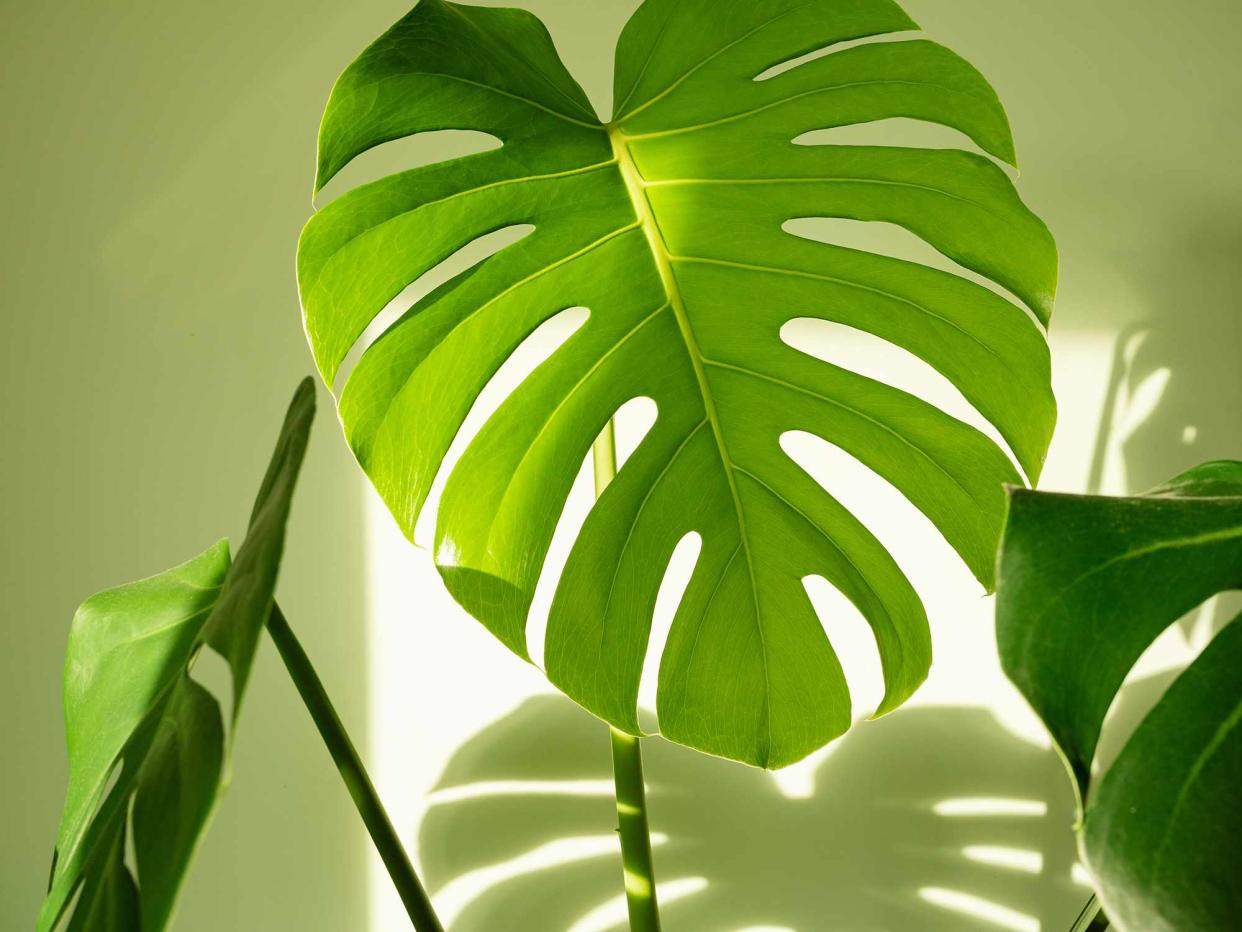Monstera Light Needs: How Much Light Does a Monstera Need?

TorriPhoto / Getty Images
Like all plants, monstera needs light to grow, but too much light can be detrimental, and possibly even kill your plant. Too little light will result in little growth, or could even leave the soil too moist and lead to root rot. Getting the light exposure right is very important to help your monstera deliciosa thrive. Here's your guide to monstera light needs so you can help it thrive.
How Much Light a Monstera Needs
A monstera needs as much bright, indirect light as it can possibly get. It's helpful to understand the different kinds of light exposure houseplants might be able to get.
Low light: If your room has no or very small windows, or only one north-facing window, it will have low light conditions. The room may be in shadow much of the time with little to no direct sunlight. Basement apartments with narrow windows often get very low light.
Medium light: This indicates less two hours of direct sunlight per day through a window or door. Windows with trees, hedges, or buildings partially obscuring the sun outside them may get medium light exposure, and the light may be dappled or filtered. A frosted glass window, such as in a bathroom, may also provide medium light.
Bright, indirect light: This means bright sunlight that hits only part of the room, and/or only for short periods of time. Placing a plant near the window, but not directly in the sun's rays, means it gets indirect light exposure.
Direct light: This refers to a room that gets bright light, either in the morning or afternoon, for several hours at a time. The most light would fall on a wall directly opposite the window where the sunlight enters. The sun is shining directly into the room.
Signs a Monstera Needs More Light
Monsteras need a steady source of bright but indirect light. If you have very low light conditions, you may determine you need grow lights to provide enough light for your plant.
Leaves won't split: If the leaves of your monstera are not splitting, it may need more sun to provide the energy needed for this aspect of its growth.
Leaves turn yellow: Monstera stores energy in its leaves, and lack of light will make the plant start to conserve energy, causing the leaves to turn yellow.
Soil stays damp for too long: If the soil in the container stays damp for long periods between watering, and you've already checked that the drainage is good, then the plant may need a bit more sunlight to help dry out the soil surface.
Grows very slowly: If you monstera seems to be growing too slowly (less than 12 inches per year) then it may need a bit more light to help it put on some size.
Signs a Monstera Is Getting Too Much Light
Too much sunlight is usually a bigger problem than too little sunlight for a monstera. Here's how to tell if yours is getting too much light.
Curling leaves: If the leaves on your monstera are curling at the ends or tips, this can be an early sign that the plant is getting too much sunlight, or not enough water.
Scorched leaves: Scorched marks or dry, patchy brown spots may mean your monstera is getting too much sunlight.
Soil dries out quickly: Too much sunlight will cause the potting soil in your container to dry out too quickly after watering, and this will affect the health of your monstera.
Tip
If your window gets bright, direct light, and you don't have another spot for your monstera, try adding a sheer or lightweight curtain to make the light more filtered.
How to Tell How Much Light Your Monstera Gets
There are a few ways you can actually define or measure how much light your monstera is getting. You could try using a light meter to measure the amount of light a room gets, but the easiest way to figure out your light exposure conditions is to look at shadows and observe how light behaves at different times of day.
Sharp, clean lines on the edges of shadows and a sharp contrast between the dark and light areas of the room means you have bright, direct sunlight. If the edges of shadows look softer or fuzzier, this means the light is indirect. Sunlight that is filtered or dappled (as through tree leaves or lace curtains) will create faint shadows with mottled shapes.
Try to observe how the light hits your monstera at different times of day. Bright, direct light in the afternoon has more impact than direct morning light, because the sun's rays are stronger then. Seeing how the sun falls throughout the day can help you choose the optimal location for your monstera to give it the right amount and type of light.
Frequently Asked Questions
Can you grow a monstera in low light?
Low light conditions may cause a monstera's leaves to turn yellow, or keep soil too moist, which may cause rot. If you only have low light conditions, consider using grow lights to provide enough light.
Where is the ideal growing location for a monstera?
Monstera does best in a spot that gets bright but indirect sunlight, such as placing it near or beside a south-facing window. West- or east-facing windows that get a good amount of indirect sunlight are also good locations.
Can a monstera be in direct sun?
A monstera should not be in direct sun for extended periods of time. If your plant is in a location that gets direct sun, it should be moved to where it gets indirect light, or you can put a sheer curtain over the window.
Read Next: How to Repot a Monstera in 7 Easy Steps
Read the original article on The Spruce.

